Subscriber Benefit
As a subscriber you can listen to articles at work, in the car, or while you work out. Subscribe NowIndianapolis city leaders took another step toward protecting pedestrians and cyclists last year when they passed an ordinance to install no-turn-on-red signs at certain intersections, mostly downtown. The safety measure was one in a long line of such laws the city has passed since 2012.
But those combined approaches haven’t quelled the rising number of pedestrian and cycling fatalities citywide. Data from the Indianapolis Metropolitan Planning Organization shows 45 pedestrian and cyclist fatalities on city streets in 2023, up almost 30% from the 35 recorded in 2021.
Safety advocates and city officials, such as Department of Public Works Director Brandon Herget, have labeled the situation a “crisis.”
“You can see increases in how a pedestrian or a bicycle user has seen their vulnerability increase …,” Herget said. “That is an undeniable fact bared by the data in Indianapolis.”
That’s why the City-County Council is expected to approve a sweeping measure Monday night with the ambitious goal of eliminating pedestrian fatalities by 2035.
Advocates hope that measures like the no-turn-on-red signs can help slow pedestrian-related crashes, but city officials acknowledge that much more will need to be done to eliminate pedestrian fatalities.
An IBJ review of crash data from the no-turn-on-red-sign intersections shows the measure has slightly reduced the number of pedestrian-related crashes.
In the 16 months before the Indianapolis Department of Public Works installed the signs, those intersections saw an average 3.87 pedestrian-related accidents per month. In the 11 months after the sign installation, the monthly average was 3.74 such accidents.
That’s according to data collected by Indy Pedestrian Safety Crisis, a dashboard and social media presence run by advocate Eric Holt. His data is sourced from 911 calls and individual reports.
Even while pedestrian and cyclist deaths have increased in the last five years, traffic accidents involving pedestrians and cyclists have actually decreased citywide.
The Indianapolis Department of Public Works provided data to IBJ showing that Marion County crashes involving pedestrians are actually projected to be 6.2% lower this year than in 2019, based on the number of accidents reported during the first half of 2024. The 112 crashes involving cyclists in 2023, was 18.8% lower than in 2019.
City officials say those decreases have been made possible by a number of infrastructure improvements in recent years.
Herget said the city has worked to give certain streets “road diets”—reducing the space allotted to vehicles by adding bike lanes and sidewalks, thereby calming traffic and reducing speeds.
Long road
Democratic Councilor John Barth has been working on measures to improve pedestrian safety since 2011. He authored several ordinances that have reduced vehicle speed limits at trail crossings. In 2022, he helped establish the Fatal Crash Review Team.
Some safety advocates have criticized the review team, however, for not making expansive recommendations in the aftermath of deadly accidents.
Damon Richards, the civilian member of the team, said the team is only authorized to recommend infrastructure improvements, not suggest enforcement or education initiatives.
“But the majority of our fatal crashes are not caused by infrastructure problems,” Richards said. “They’re caused by people behaving badly.”
Traffic laws need better enforcement, he said, “but with a shortage of police officers, you probably don’t want them to spend their time sitting in a car with a radar gun.”
The Indianapolis Metropolitan Police Department consistently is about 200 officers shy of full staffing.
Councilor Jared Evans, a Democrat who represents west-side District 17, has argued on multiple occasions that city efforts are fruitless without improved enforcement and ticketing.
He said the number of traffic tickets issued annually by IMPD has dropped to about 12,000 a year from 60,000 about 20 years ago.
“We have developed a culture in this city that no one is fearful of doing anything wrong on the streets,” Evans said.
IMPD said it continues to optimize traffic-enforcement efforts within its limited resources.
“That includes a focus on high traffic areas, school zones, parks and locations with a high number of traffic complaints,” the department said in a written statement.
IBJ requested information on how many citations IMPD had issued to drivers violating the no-turn-on-red signs since they were installed last summer. IMPD said it could not immediately provide the information but was working to compile the data.
Aiming for zero fatalities
Traffic-law enforcement is one of many factors that will be considered as city leaders draft a strategy to reach the zero-fatalities goal.
The proposal up for vote on Monday seeks to establish a task force focused on the “Vision Zero” framework implemented by several cities, including Columbus and Cincinnati. The Vision Zero premise is that all traffic deaths and severe injuries are avoidable. It requires participation from several city departments, not just the Department of Public Works, and other key stakeholders.
The Vision Zero proposal was brought to the council by Democrats Barth and Andy Nielsen. Nielsen, whose east-side District 14 includes Irvington, told a council committee this month that Vision Zero is systematic, data-driven and outcome-based. He listed a few components, like even more road designs that slows drivers, leading pedestrian signals, education to “make sure drivers put the dang phones down,” and a greater emphasis on ticketing violators.
“If you care about them, just one of those things, Vision Zero does that,” Nielsen said.
The plan would establish a citywide, 15-member task force to craft measures based on best practices. It would also maintain public access through at least two open meetings per year, beginning Oct. 1, and an online portal.
The city would hire a full-time, dedicated Vision Zero administrator by Jan. 1. That individual would work across departments to create long-term policy solutions and budget recommendations over the next decade—independent of the city’s annual budgeting process.
The task force would adopt a Vision Zero strategy by July 1. Each step in that strategy would include deadlines for implementation, list those responsible for implementation, cite funding sources or actions needed to obtain funding, and set performance goals or metrics.
Progress on the strategy would be reported to the City-County Council every quarter. It would be updated annually before May.
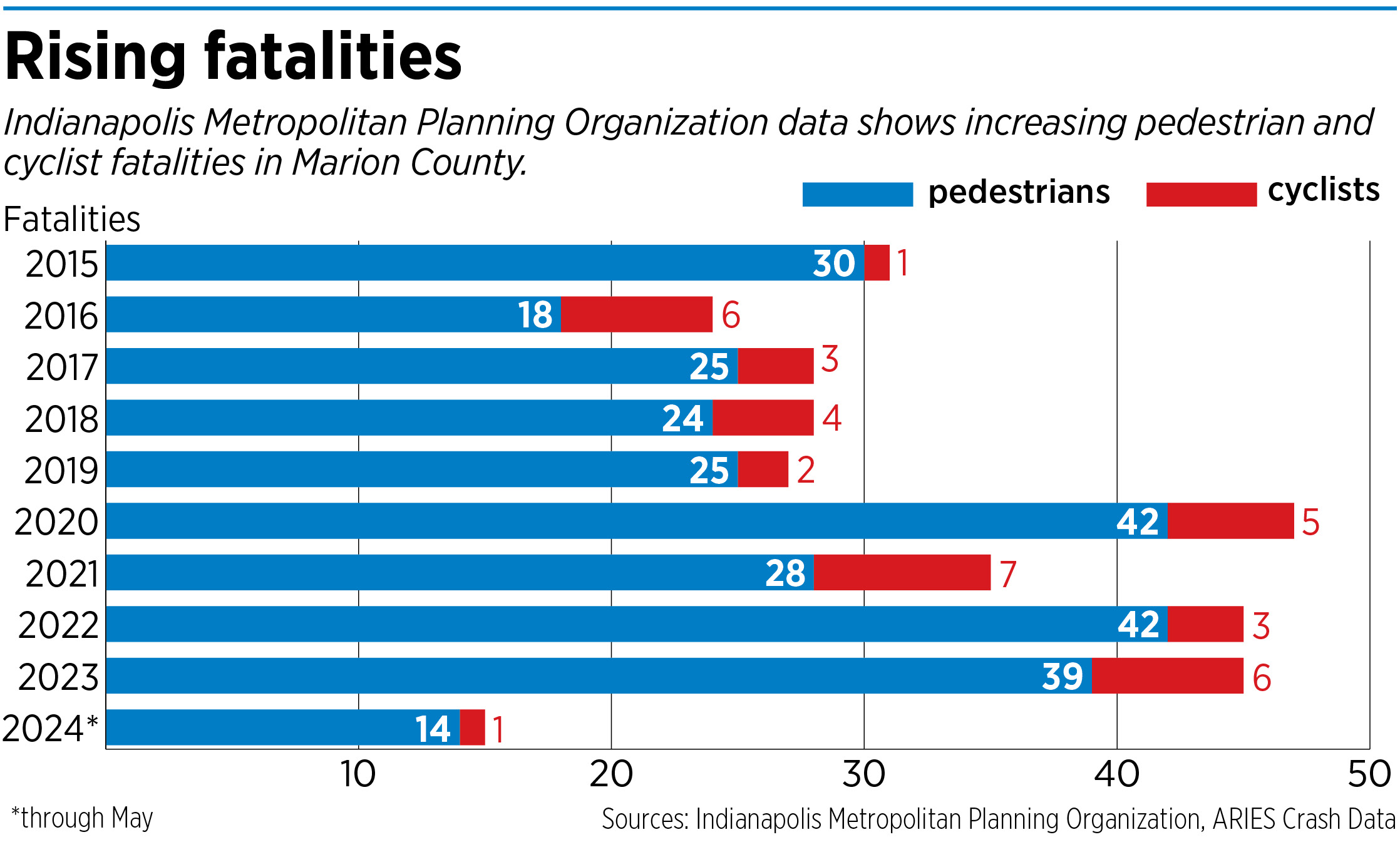 The Hogsett administration has come out in support of the measure.
The Hogsett administration has come out in support of the measure.
The Department of Public Works would use a grant from the Indianapolis Metropolitan Planning Organization to hire Burgess & Niple, the firm of Columbus Vision Zero architect Maria Cantrell. That firm would guide implementation.
Safety advocates have been handing out stickers that say, “Danger. Indianapolis doesn’t care about pedestrians. Support vision zero now.” The same circles have hung up yellow signs at locations where pedestrians and cyclists were killed in a crash, warning, “Your neighbor was killed here after being struck by a vehicle.”
Vision Zero funding is a big question mark. Outside of the costs associated with hiring the administrator and holding meetings, no other funds have been allocated for the proposal.
Connie Szabo Schmucker, advocacy director with Bicycle Garage Indy, has spent a lot of time and effort focused on safety where the Monon Trail crosses East 86th Street. Her co-worker, Frank Radaker, was killed there when he was struck by a driver in 2021.
She and a group of volunteers have worked to make the intersection safer, including installing neon-yellow plastic bollards and rumble strips. Within a matter of weeks, all but two of the 13 bollards had been knocked out by cars. For her, that illustrates the problem: Those 3-foot poles could have been people. Three cyclists were hit at that intersection in March and April, she said.
That project cost $15,000 and involved at least 60 volunteers to paint and install or reinstall bollards, she said.
Safety advocates say cities that have successfully implemented Vision Zero efforts have made significant investments.
Cincinnati, for example, has a pedestrian-safety team that adds bollards or paints safety lanes in intersections where pedestrians have been hit. Milwaukee, another city with a Vision Zero plan, built 50 traffic-calming projects last year and is on track for an additional 46 this year.
For just 2021 and 2022, Columbus reported spending $14.4 million on Vision Zero strategies.•
Please enable JavaScript to view this content.


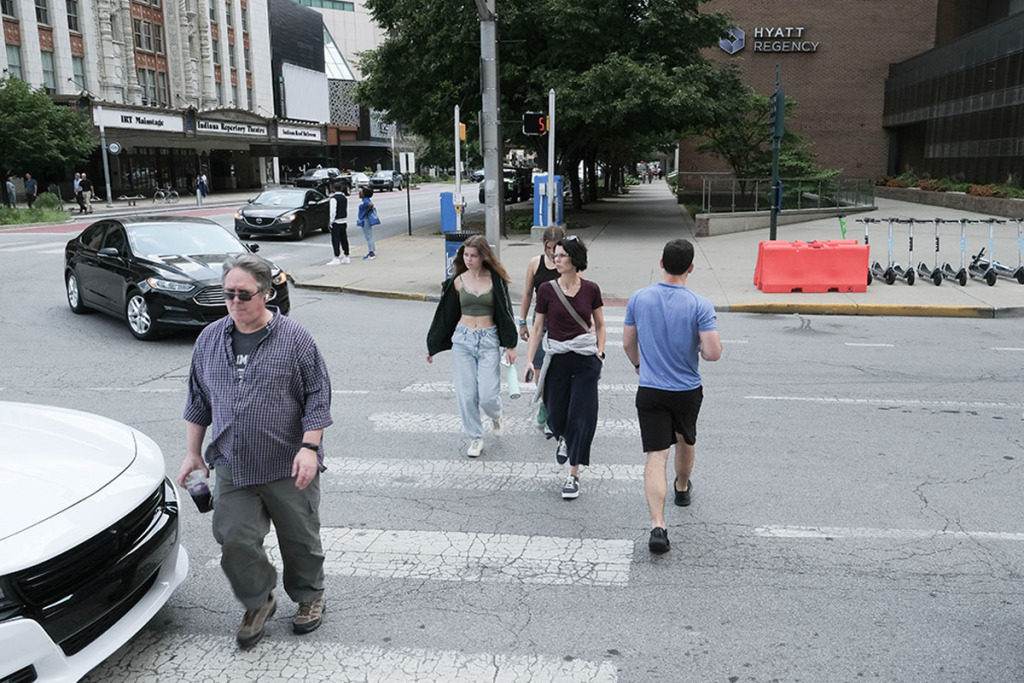
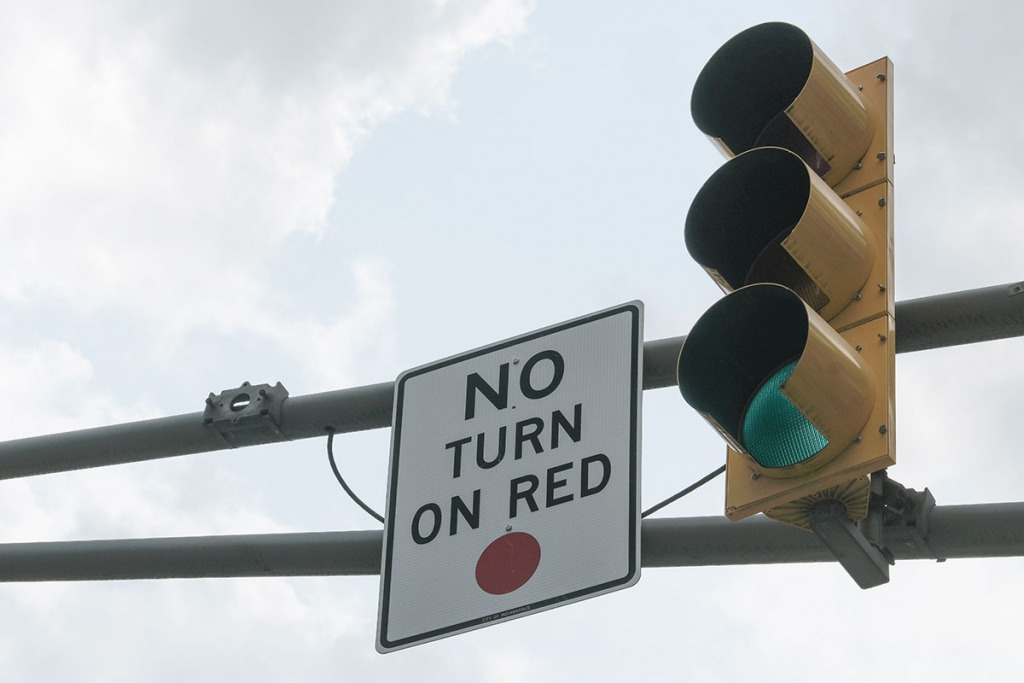
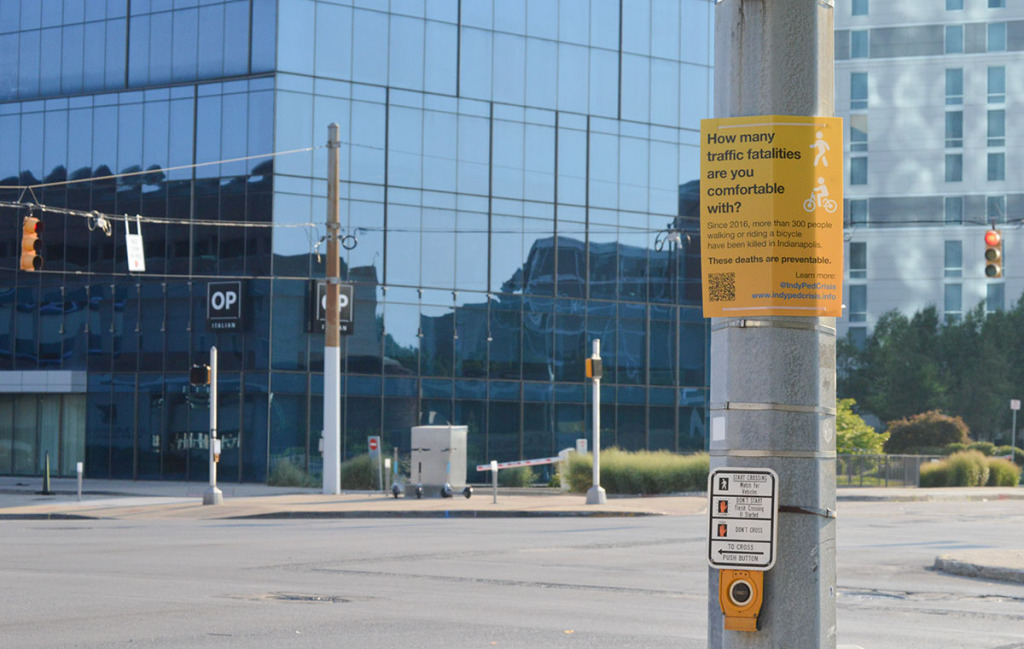

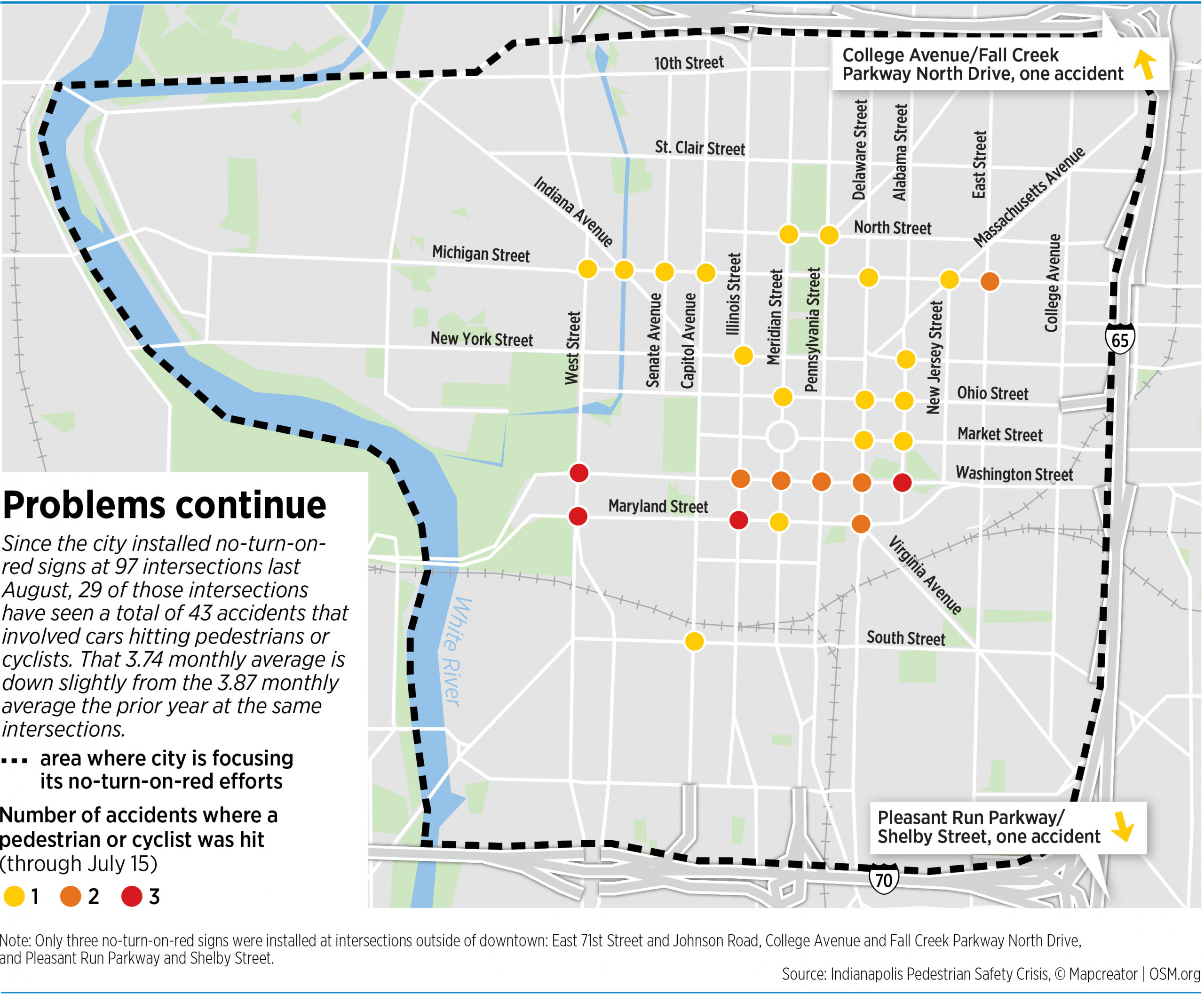


Why does everything depend on volunteers? How is there now budget for the most basic of services? Can we start with the abundance of low hanging fruit? Can we not begin with getting the cross walk zebra-stripe to a good shape -thooughout the city they are uniformly horrible to non-existent. Let’s start with the city center crosswalks. The behavior of drivers is largely determined by the visual cues they see. Increased visibility helps ensure that drives are aware of the presence of crosswalks and the likelihood pedestrians will be crossing the road there. They also encourage pedestrians to cross in safe designated areas and make them more visible to drivers. Raise cross walks and install flashing beacons to further raise pedestrian visibility and driver awareness that pedestrians are present. Finally, an 80% drop in traffic citations over 20 years from 60k to 12k per year – SERIOUSLY?!! Above all why not increase enforcement? The installation of speed cameras to automatically ticket cars driving too fast on city center streets would help a lot. Combined, these will increase pedestrian safety substantial without imposing undue cost on safe and legitimate drivers who abide by traffic laws.
Property tax caps, the inability to collect a local option sales tax (all sales tax goes to State or CIB), and a lot of infrastructure liability with a low-density population has consequences. Indy has an operating budget of $1.6B for ~950,000 people spread over 400 square miles. By comparison, Denver has a budget of $4 billion for ~150 square miles, Minneapolis has $1.8B for just 58 square miles, and Detroit has $2.7B for 142 square miles. The reality is that our local agencies are being crushed under the realities of a lot of things to take care of and an extremely constrained capacity to execute.
You need to include an analysis of the data for your readers and include causes for these fatalities— drivers running red lights? Pedestrians and cyclists ignoring traffic lights/signs? What are the top most dangerous intersections for these fatalists and could public resources be used most effectively by fixing those top spots? Citizens need more information to determine if the Council’s current one-size fits all approach is the best one. And it’s hard to take this seriously as a top priority for the Council when it ignores completely the skyrocketing rise in the number of pedestrians who are panhandling out in the middle of the city’s busiest intersections at peak traffic times of the day.
This from the same city government that can’t be bothered to properly stripe crosswalks with white rectangles that indicate “crosswalk.” They allow the Cultural Trail and others to use crosswalks as marketing surfaces, featuring curlicues, bright colors and the names of rich donors. At least pedestrians have something garish to look down at and focus on as they get run over.
I just wish we would expend this kind of effort on our out of control murder rate.
I’m in favor of ticketing anyone parked in a crosswalk. It would be more effective than the no turn on red signs. You’re either paying attention or you’re not.